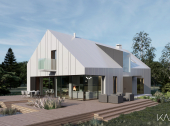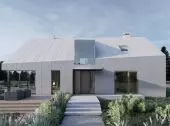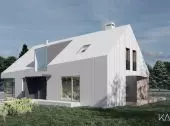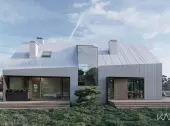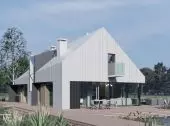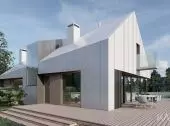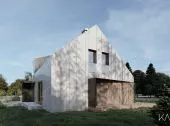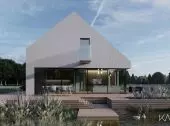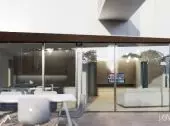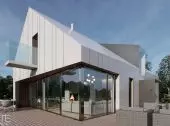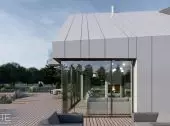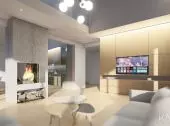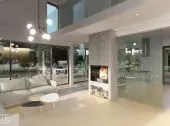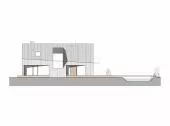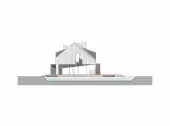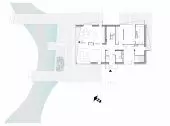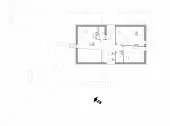According to the investor's wishes, the design of the house located in the vicinity of the lakes was to combine modernity and respect for the surrounding nature and traditional buildings of Kashubia. It was also to be different from most single-family houses currently being built in the region.
Project of a house in Kashubia
© Karate Project
Project of a house in Kashubia
© Karate Project
To meet the formal and legal requirements of the project plot and the investor's guidelines, it was necessary to continue the cultural tradition associated with Kashubian construction. It was primarily a matter of maintaining the appropriate proportions of the building. The solution turned out to be a simple form and avoiding a historicizing approach to detail and the use of literalities.
The body of the 19th century Kashubian cottage was characterized by simplicity, a rectangular plan and a compact form covered by a high gabled roof. These were the features that laid the groundwork for the design work.
Project of a house in Kashubia
© Karate Project
The seemingly traditional form of the building was gently transformed by turning the ridge by several degrees with respect to its projection. As a result, the line of contact between the roof slope and external walls was given a variable height. This procedure gave the form lightness and dynamism. The traditional Kashubian house did not have overly elaborate eaves, so it made sense to use an eaveless solution in the design, using modern construction technologies. This action emphasized the minimalist expression with which the body of the house is characterized and exposed its detail-saving, elegant and thoroughly contemporary character.
Design of the house in Kashubia
© Karate Project
The simple, dynamic form, somewhat reminiscent of crystal finished in light gray lacquered aluminum sheeting, stands out against the green landscape, but at the same time does not try to compete with it. The juxtaposition of custom-made tin panels and larch wood cladding emphasizes the importance of tradition and modernity in the perception of contemporary architecture. The overall design is complemented by large facade glazing and simple, delicate steel-framed dormers. An important aspect of the design process was to provide as much light as possible to all the rooms in the building. This was also to include the ability to easily experience nature through its penetration into the house. Sun, space and greenery, the three joys of modernism, were the pillars on which the functional concept of the building was based.
Design of the house in Kashubia
© Karate Project
Most of the rooms on the first floor have the possibility of direct access to the terrace. Thus, residents of the house will be able to enjoy panoramic views not only from the living room or dining room, but also from the master bedroom, kitchen, gym and bathroom. A spacious terrace passing into piers suspended over the backyard pond is a natural extension of the building's interior. In accordance with the investor's wishes, the living room was divided into two zones. The first of these, located on the first floor, was connected to the kitchen and dining room by a movable glass wall.
Project of a house in Kashubia
© Karate Project
A distinctive feature of the Kashubian house was the approach of the windows to the corner of the building. This was intended to bring light into the main room. Following this pattern, it made sense to use a corner large-format glazing designed with a facade system in the living room. This window provides a view of the water and the rich greenery surrounding the building.
Design of a house in Kashubia
© Karate Project
The interior has been designed in light, muted colors allowing for a sense of space. This impression is enhanced by opening the ceiling over the living room. The resulting mezzanine, located above the kitchen and dining room, forms a second part of the living room. It is a slightly more intimate space, which has room for an antique piano, which is a family heirloom of the homeowners.
Design of the house in Kashubia
© Karate Project
The cantilevered balcony, accessible from the music room, was designed to provide the best possible view of the greenery and water surrounding the building. The rest of the mezzanine, lit by a dormer, was developed as an open home office. A second dormer providing light to the staircase is located on the opposite side of the longer side of the building. This creates a glass bracket that allows the house to be screened and the views to penetrate even further into the house.





















